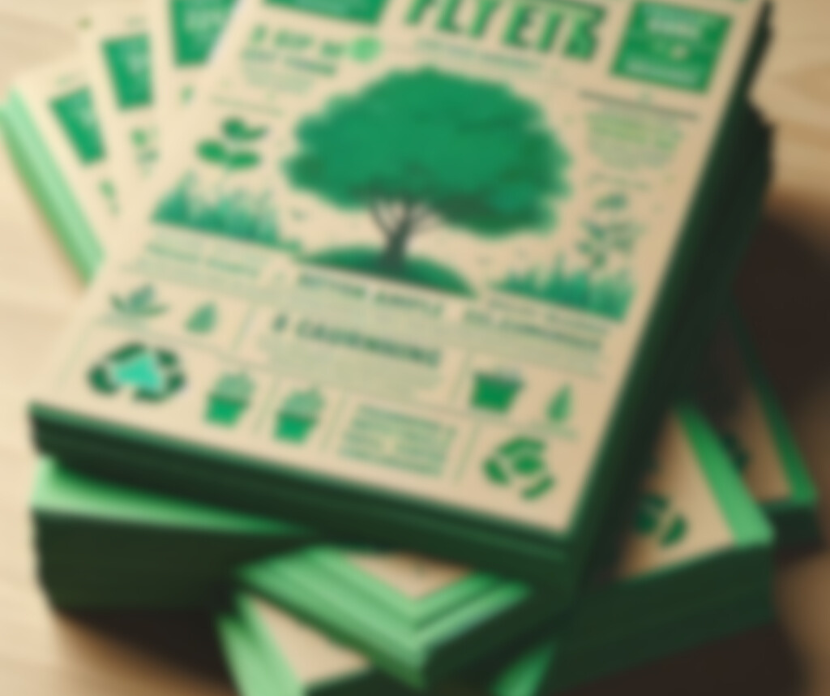In today's increasingly eco-conscious world, businesses are looking for new ways to market their products and services while reducing their environmental impact. Traditional marketing strategies, such as leaflet distribution and direct mail, have long been common in the advertising sector. However, as public concern about climate change and environmental degradation grows, businesses are increasingly resorting to eco-friendly options to reach their target audience.
Enter eco-friendly leaflet distribution and direct mail – sustainable solutions that allow businesses to promote their brand while reducing their carbon footprint.
Why Go Green?
Before delving into the specifics of eco-friendly leaflet distribution and direct mail, let's explore why businesses should prioritise environmentally sustainable marketing practices.
Environmental Responsibility:
Adopting eco-friendly marketing practices demonstrates a company's commitment to environmental stewardship, appealing to environmentally conscious consumers.
Brand Image:
Embracing green initiatives enhances a brand's reputation and fosters goodwill among consumers who prioritise sustainability.
Cost Savings:
Implementing eco-friendly strategies can lead to cost savings over time by reducing paper usage and minimising waste.
Eco-Friendly Leaflet Distribution
Traditional leaflet distribution entails printing and delivering thousands of fliers to homes, businesses, and public places. While this strategy is effective for reaching a large audience, it often generates a lot of paper trash and pollutes the environment.
Eco-friendly leaflet distribution seeks to mitigate these negative impacts by incorporating sustainable practices:
Recycled Paper:
Utilising recycled paper for leaflet printing reduces the demand for virgin paper and minimises deforestation.
Vegetable-Based Inks:
Vegetable-based inks are derived from renewable resources and produce fewer harmful emissions than traditional petroleum-based inks.
Targeted Distribution:
By carefully targeting distribution areas based on demographic data and consumer behaviour, businesses can minimise the number of leaflets printed and distributed, reducing waste.
Direct Mail with a Green Twist
Direct mail initiatives transmit marketing materials, such as postcards or brochures, directly to consumers' mailboxes. Traditional direct mail, while successful in generating leads and increasing sales, can contribute to excessive paper use and waste.
Here's how businesses can make their direct mail campaigns more eco-friendly:
Opt for Sustainable Materials:
Choose recycled or sustainably sourced paper for direct mail materials. Additionally, consider using alternative materials like seed paper, which recipients can plant to grow wildflowers after reading the mail.
Digital Integration:
Supplement direct mail campaigns with digital marketing efforts to reduce reliance on printed materials. Include QR codes or personalised URLs that recipients can scan or visit to access additional content online.
Minimalist Design:
Embrace minimalist design principles to reduce the amount of paper used in each direct mail piece. Focus on concise messaging and eye-catching visuals to convey your brand's message effectively.
Conclusion
Incorporating eco-friendly leaflet distribution and direct mail into your marketing strategy enables your company to efficiently contact consumers while reducing its environmental impact. Companies that prioritise sustainability not only attract environmentally concerned customers, but also help to create a healthier planet for future generations. Adopt green marketing methods to help your brand and the environment have a more sustainable future.
Other Recent Posts
Understanding Your Audience: Mapping Out Leaflet Drops in Derby
In an age where Digital invitations and social media promotions are winning, the humble leaflet still has a lot of power for promoting events in Derby. Leaflet distribution offers a tangible, personal and cost effective opportunity to create buzz for everything from a community fair to a grand opening because of its ability to connect […]
Think Local, Act Paper: Leveraging Leaflets for Derby Events
In an age where Digital invitations and social media promotions are winning, the humble leaflet still has a lot of power for promoting events in Derby. Leaflet distribution offers a tangible, personal and cost effective opportunity to create buzz for everything from a community fair to a grand opening because of its ability to connect […]
How Leaflet Distribution Builds Trust with Doncaster’s Residents
Today’s digital world moves at lightning speed. Ads show up on all screens (and inboxes) for everyone to see, and promotion is the constant. It can be hard to gain trust with local audiences. Leaflet distribution is becoming a strong force for businesses in Doncaster to create real links with residents. This classic marketing technique […]
Why Nottingham Startups Are Turning Back to Leaflet Campaigns
Within today’s digital world with social networks and email campaigns, countless people deem traditional means of advertisement such as flyer distribution as useless. Nevertheless, Nottingham’s startup ecosystem is a counterexample to this idea. The young entrepreneurs of Nottingham are now turning to the services of the good old fashion hand delivery with a new age […]






